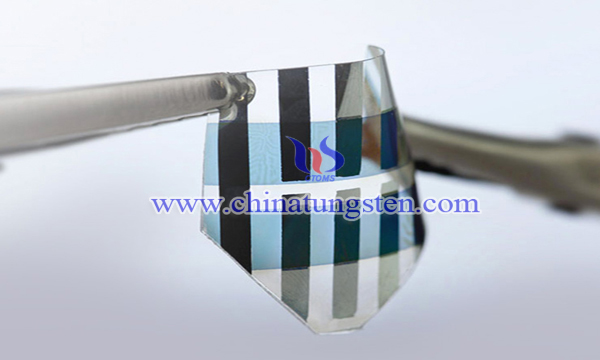Two-dimensional Materials Will Lead to a New Technological Revolution
- Details
- Category: Tungsten's News
- Published on Sunday, 08 September 2019 10:19
When 3M scientists combined ordinary tape with Dupont's impervious cellophane in 1930 to produce a clean, inexpensive adhesive device, transparent tape, the United States was in the midst of the Great Depression. This product was very suitable for saving population and manpower - a remarkable progress. Transparent tape can be used to repair cracks in various materials. Musicians use transparent tape to repair torn music scores; women, repair broken nails; accountants, restore torn books; and banks, repair torn money.

On a Friday afternoon at the University of Manchester Laboratory in 2004, scientists Andre Geim and Kostya Novoselov were investigating the electrical properties of carbon graphite. The two physicists had a sudden whim. They decided to test whether they could get thinner graphite sheets by peeling off a layer of transparent tape. (They saw other researchers use tape to clean graphite and put it under a microscope.)
During the first passage, Geim and Novoselov separated hundreds of layers of carbon without disturbing their underlying structure. Interestingly, they repeated the process with more tapes. Soon after, they stripped the graphite back to its thinnest possible arrangement: a layer of individual atoms. Here is a very short material, a thin pencil material, which can be described as two-dimensional. This is an amazing and elusive concept that scientists have been pursuing for many years. This is graphene. This is a breakthrough in the use of transparent tape.
Every year, hundreds of research papers on two-dimensional materials are published by scientists to describe nanomaterials experiments in a range of fields. For example, in the manufacturing industry, scientists have tried to make aircraft airframes with graphene densities of 5% steel, but strength of 10 times that of steel, which can be processed in 3D printers. In the past 50 years, every advancement in computer technology has resulted from the miniaturization of components and wafers and the subsequent performance improvements. Scientists are trying to use tungsten diselenide to make chip materials for processor companies that can store devices 100 times faster than existing market products or 10,000 times faster.
In addition, tungsten disulfide has also been used in future phototherapy. Scientists have used nanomaterials to label cancer cells in patients, record almost imperceptible electrical information between cellular structures, reveal minor mutations and dysfunction, including the initial stage of tumor growth, and deliver molecular drugs directly to target cells.
Although more than a dozen two-dimensional particles have been separated so far, graphene is still the only particle that is often used in commercial applications. In the next three to five years, scientists will frequently introduce new and innovative technologies and accumulate knowledge about how these miracle materials work. In a word, there are still many unknown discoveries in the two-dimensional material world. Scientists believe that the two-dimensional material will completely change the process of promoting or changing the development of human science. It has greater industrial value than the existing real estate industry. The two-dimensional material will drive the real scientific and technological revolution.
- Tungsten Manufacturer & Supplier, Chinatungsten Online: www.chinatungsten.com
- Tungsten News & Prices of China Tungsten Industry Association: www.ctia.com.cn
- Molybdenum News & Price: news.molybdenum.com.cn
- Tel.: 86 592 5129696; Fax: 86 592 5129797; Email: sales@chinatungsten.com



 sales@chinatungsten.com
sales@chinatungsten.com